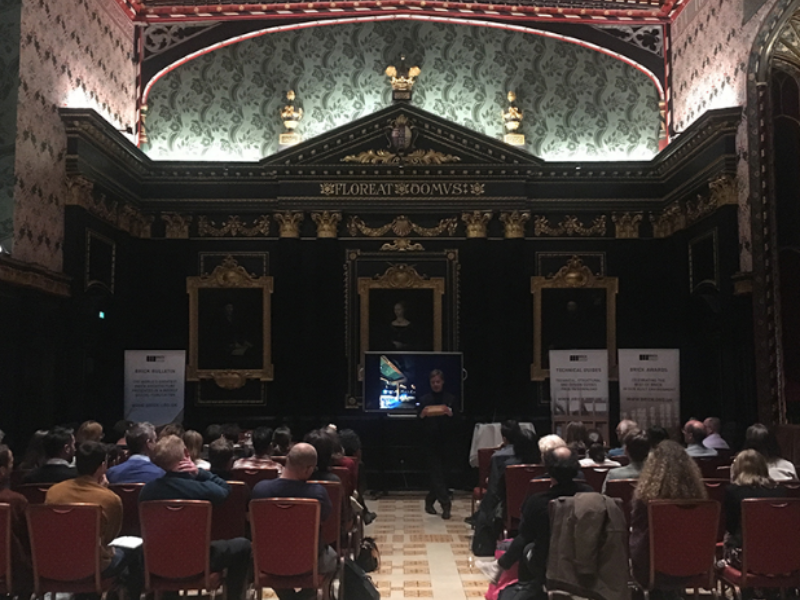
Building on the success of our first regional events in Birmingham and Manchester during 2018, this year we’re delighted to deliver our first ever Brick Works evening in Cambridge.
Hosted by the University of Cambridge at The Old Hall, Queens' College, we will hear first from one of the world’s leading authorities on the history of clay brick, Dr James W.P. Campbell, Reader in Architecture and Construction History, Queens’ College (Fellow) and Director of Studies both for Queens’ and Trinity. James will draw on the depth of knowledge that informed his first book, Brick: A World History, which was celebrated Guardian Book of the Week when published in 2003.
The evening will then continue through the highly topical case-study, The Interlock, presented by Katerina Dionysopoulou and Billy Mavropoulos, Founders of the award-winning architecture practice, Bureau de Change. The Interlock absorbs London’s Fitzrovia’s history and responds by taking the proportions of the neighbouring 19th Century terrace and, recasting its brick façade to create a building of uncertain heritage – one that references the site’s historic while simultaneously demonstrating contemporary engineering and design; it is unique yet invokes a sense of familiarity. Abandoning the traditional dimensions of London brick, a collection of 44 misshapen and seemingly un-stackable clayblocks were developed. The patterns visible across the surface are informed, in part, by the interactions betweenmaterials and structure. The bricks appear to lap up against glazing, swell and bow between floors and are inset frame-like to denote the building’s perimeter.
Finally, guests will hear from award-winning architect, ceramic artist and designer, Maria Gasparian, on what she considers the possibilities for creating extraordinary architecture by combining ceramic art and industrial manufacturing. Maria is currently undertaking a practice-based PhD at Central Saint Martins, UAL, on the creation and integration of decorative architectural ceramics in public buildings and spaces. In particular, Maria researches how unique colour, texture and shape can be achieved in the mass production of bricks and, a subject with which she is experimenting presently through prototyping with Wienerberger.